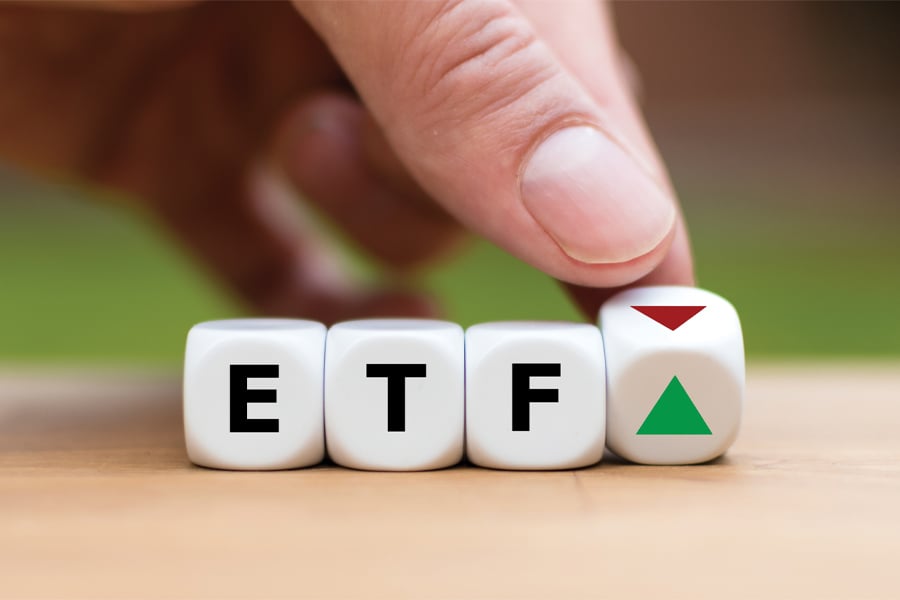

West Coast bond shop DoubleLine Capital is following the mutual fund herd into the ETF market, with two funds on track to launch early this year.
According to filings with the Securities and Exchange Commission, the actively managed DoubleLine Opportunistic Bond ETF (DBNB) will charge 50 basis points, while the actively managed DoubleLine Shiller CAPE U.S. Equities ETF (DCPE) will charge 65 basis points.
As the filings work through the normal regulatory process, DoubleLine is prohibited from commenting on the new funds. But during a December interview on The InvestmentNews Podcast, DoubleLine’s deputy chief investment officer Jeffrey Sherman nodded toward the growing opportunities in the ETF space.
“The ETF wrapper is becoming more widely accepted,” he said. “There’s a natural transition out there where you’ll see more and more active ETFs.”
For a lot of traditional mutual fund companies, last year was a tipping point toward the ETF space. The generally less expensive and more liquid ETF wrapper has become a darling of financial advisers, which helps to explain the record $910 billion of net inflows into ETFs last year, blowing past 2020’s record of $504 billion.
But for some mutual fund companies, including the $137 billion DoubleLine, the move into the ETF space is more like an open endorsement of an existing business line, which could present new challenges down the road.
While DoubleLine doesn’t officially offer any ETFs yet, it does subadvise three ETFs offered by State Street Global Advisors, the $2.9 billion SPDR DoubleLine Total Return Tactical ETF (TOTL), the $99 million SPDR DoubleLine Emerging Markets Fixed Income ETF (EMTL), and the $162 million SPDR DoubleLine Short Duration Total Return Tactical ETF (STOT).
Todd Rosenbluth, director of mutual fund and ETF research at CFRA, said TOTL has a similar strategy and will likely share a portfolio management team with DoubleLine’s new Opportunistic Bond ETF.
Rosenbluth drew parallels between DoubleLine’s ETF launch of funds that are similar to strategies it already subadvises and the way Dimensional Fund Advisors last year moved into the ETF space with a fund similar to a DFA index that John Hancock Financial has licensed for a passive ETF, the $802 million JHancock Multifactor Large Cap ETF (JHML).
“DFA used their expertise about stocks to help John Hancock build an index ETF, and now DFA has their own index ETF following the same philosophy,” Rosenbluth said. “They built an index based on their active management criteria.”
At DoubleLine, the move into ETFs appears to be another avenue to offer its active fixed-income strategies.
“You’ve seen some of the major players in the mutual fund business get into the ETF space with conversions and pure launches,” Sherman said during the podcast interview.
“I don’t think active is dead, I just think you need some differentiation out there,” he added. “Fixed income is very well suited for active management, and ultimately advisers like active management within the fixed-income space. I expect to see significantly more innovation there.”

Rajesh Markan earlier this year pleaded guilty to one count of criminal fraud related to his sale of fake investments to 10 clients totaling $2.9 million.

From building trust to steering through emotions and responding to client challenges, new advisors need human skills to shape the future of the advice industry.

"The outcome is correct, but it's disappointing that FINRA had ample opportunity to investigate the merits of clients' allegations in these claims, including the testimony in the three investor arbitrations with hearings," Jeff Erez, a plaintiff's attorney representing a large portion of the Stifel clients, said.

Chair also praised the passage of stablecoin legislation this week.

Maridea Wealth Management's deal in Chicago, Illinois is its first after securing a strategic investment in April.
Orion's Tom Wilson on delivering coordinated, high-touch service in a world where returns alone no longer set you apart.
Barely a decade old, registered index-linked annuities have quickly surged in popularity, thanks to their unique blend of protection and growth potential—an appealing option for investors looking to chart a steadier course through today's choppy market waters, says Myles Lambert, Brighthouse Financial.
